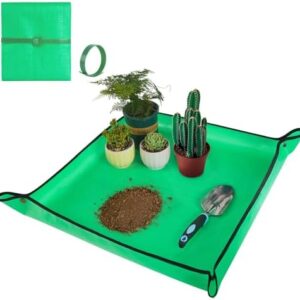When we look at a flourishing plant, we often don’t think about the incredible journey it took to get to that point. From a tiny seed to a sprawling, green masterpiece, the process of plant growth is truly remarkable.
Let’s take a closer look at the stages of plant growth, from seed to stem, to better understand the intricate dance of nature that allows plants to thrive and flourish.
It all starts with a seed. Seeds come in all shapes and sizes, but they all hold the same potential for growth and life. Within each seed is a tiny embryo, waiting for the right conditions to sprout and grow. Seeds can be dispersed by the wind, water, or animals, but once they find a suitable spot to call home, the magic begins.
Once a seed is planted in soil, water, and nutrients, the germination process begins. The seed absorbs water, softening its outer shell and triggering the release of enzymes that kickstart growth. The embryo inside the seed begins to swell and push through the seed coat, forming a tiny root that will anchor the plant in the soil.
As the root grows downward, a shoot emerges from the seed and heads towards the light. This shoot will eventually become the plant’s stem, which supports the leaves and flowers above ground. The first set of tiny leaves, called cotyledons, provide the young plant with its initial source of energy through photosynthesis.
With the roots firmly in the soil and the stem reaching towards the sky, the plant enters the vegetative growth stage. During this phase, the plant focuses on building a strong foundation of leaves and stems to support future growth and flowering. The plant’s roots continue to grow and branch out, seeking out water and nutrients in the soil to fuel its growth.
As the plant matures, it begins to transition from vegetative growth to reproductive growth. This is when the plant starts to produce flowers, which are essential for pollination and the production of seeds. Depending on the type of plant, the flowers can be bold and showy, or small and inconspicuous, but they all play a crucial role in the plant’s life cycle.
Once the flowers have been pollinated, they begin to develop into fruits, seeds, or other reproductive structures. The plant shifts its focus from growth to reproduction, channeling its energy into producing offspring to ensure the survival of its species. The fruits and seeds produced by the plant are essential for dispersal, allowing the plant to spread its genetic material far and wide.
After the reproductive cycle is complete, the plant may enter a period of dormancy or prepare for the next growing season. Leaves may change color and fall off, stems may wither and die back, but deep within the plant, life is still buzzing. Energy is stored in the roots and stems, ready to burst forth when the conditions are right.
And so, the cycle of growth continues, from seed to stem and back again. Each stage of plant growth is a testament to the resilience and adaptability of nature, as plants navigate the challenges of their environment to thrive and flourish.
As we watch a plant grow and evolve, we are reminded of the beauty and complexity of the natural world. From the tiniest seed to the tallest tree, each plant has a story to tell, a journey of growth and transformation that inspires wonder and awe.
So next time you see a plant sprouting from the ground, take a moment to appreciate the incredible journey it took to get there. From seed to stem, the stages of plant growth are a testament to the power and beauty of nature, and a reminder of the interconnectedness of all living things.






